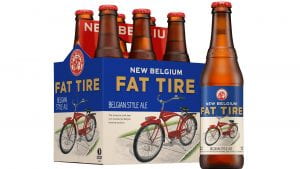Green business features have been gaining popularity recently. Firstly, let’s start off by explaining what a green business feature is; a company that embraces sustainable operations, products and materials, labor, and shipping methods. The business I chose to focus my blog on is New Belgium Brewing Company.

In 1998, a young couple biked through Belgium. This trip sparked inspiration to bring Belgium brewing tradition to their home town in Colorado. They opened the first wind powered brewing company in Colorado. Their brewing company expanded and grew. By the summer of 2003, they decided to be a part of the change. They created an in -house sustainability department, becoming a Certified B-Corp and 1% for the planet member. In their efforts, they installed solar panels, created electricity from waste water, and reused heat for brewing to reduce energy waste. In 2009, they created at the time the largest private solar array in their home state of Colorado. They focused on their product’s lifetime in order to choose their perfect packaging. They chose to use glass bottles rather than cans to cut down on emissions. They partnered with the Glass Recycling Coalition to make their bottles, further reducing their waste. After more years of trying to perfect sustainable brewing,their beer Fat Tire became the first American certified carbon neutral beer.

Since the owners and founders discovered this type of brewing on bikes, they have supported biking through their whole career. They have donated over nine million dollars to bike advocacy groups across the United States, donated part of their land in Asheville to act as a biking trail, and host bike races in their Fort Collins brewing location.
The owners and founders of New Belgium Brewing are members of the Business for Innovation Climate and Energy Policy, along with being on the board of the We Are Still In movement. I chose this business because of their values: we inspire social and environmental change. These values personally spoke to me. While doing our litter sweep, one of the most common items my group found was alcohol cans, bottles, and caps. I love that they incorporate both social and environmental values. Drinking is often found in social settings. By them producing as little waste as possible, it not only reduces waste but benefits people.

Greenwashing can be seen in many different organizations. It provides a false sense about a company’s environmental standing. Throughout my research on New Belgium Brewing, I could not find any signs of greenwashing. I believe that the couple that started this company truly believes in their values.On their website, they have a section completely dedicated to their sustainability. They have different tabs based on each sustainable thing they have been a part of. From biking, packaging, distribution, heating, along with so much more. Their efforts are very wide scale. They have lost thousands of dollars of profit in order to reduce waste. If you are interested in this company, I highly recommend checking out their website. They have a ton of information on each process. I believe that this is one of the companies that is doing good for the world.


















